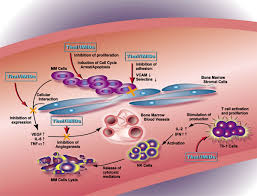Previously known as pre-leukemia, myelodyslastia syndrome is a haematological condition that is made up of the inefficient red blood cell production and a host of other health complications. A lot of people are unfamiliar with myelodysplastia syndrome's details, although most know about leukemia, which is commonly the end-result of MDS.
MDS is an affliction of the bone marrow stem cell, which may result in ineffective and irregular blood production. This irregularity can result to irreversible problems in the blood-forming cells. The illness takes a course towards being chronic in most cases, and can slowly worsen because of steady bone failure. Research shows that an estimated 1/3 of the patients who have MDS can develop acute myelogenous leukemia within a couple of years of living with the condition.
Myelodysplastia Syndrome Diagnosis
According to researchers, the time of diagnosis for the myelodysplastia syndrome is on the average, between 60 and 75 years old. This disorder is more prevalent in males than in females, and is generally rare in children. Although a lot of the symptoms can lead to the detection of this condition, these are linked to other blood disorders; the symptoms are therefore not commonly linked to MDS until the later stages.
Some of myelodyspastia syndrome's symptoms include:
* Neutropenia - An increased vulnerability to infection
* Anemia - Chronic shortness of breath, chest pain and fatigue
* Thrombocytopenia - Increased vulnerability to bleeding
It is estimated that 50 percent of MDS-related deaths occur as a result of infection or extensive bleeding. Researchers everywhere are still hard at work in trying to find a cure for myelodysplastia syndrome, and for now patients can only rely on the treatments. It should be noted, though, that the type of leukemia that develops from MDS is in particular extremely resistant to different kinds of treatment.
Myelodysplastia Syndrome Detection
Due to its common and general symptoms, MDS can often be wrongly diagnosed, which is the reason why doctors have to examine the blood film and do a full blood count. These steps are necessary to eliminate other possible causes of the symptoms, such as B12, HIV or hepatitis. Doctors also do chromosomal studies that require fresh specimens, inducing the live cells tested to magnify the chromosomal staining.
Myelodysplastia Syndrome Origins
One of the known causes of MDS has to do with environmental factors, specifically the exposure radiation and to the toxic chemical benzene. Secondary MDS can also arise in patients who experience late toxicity, as a result of prolonged exposure to cancer treatments. It is now proven that MDS is a result of the bone marrow stem cell mutations; however the abnormalities responsible for these mutations are yet to be fully understood.
For Further Reading,


